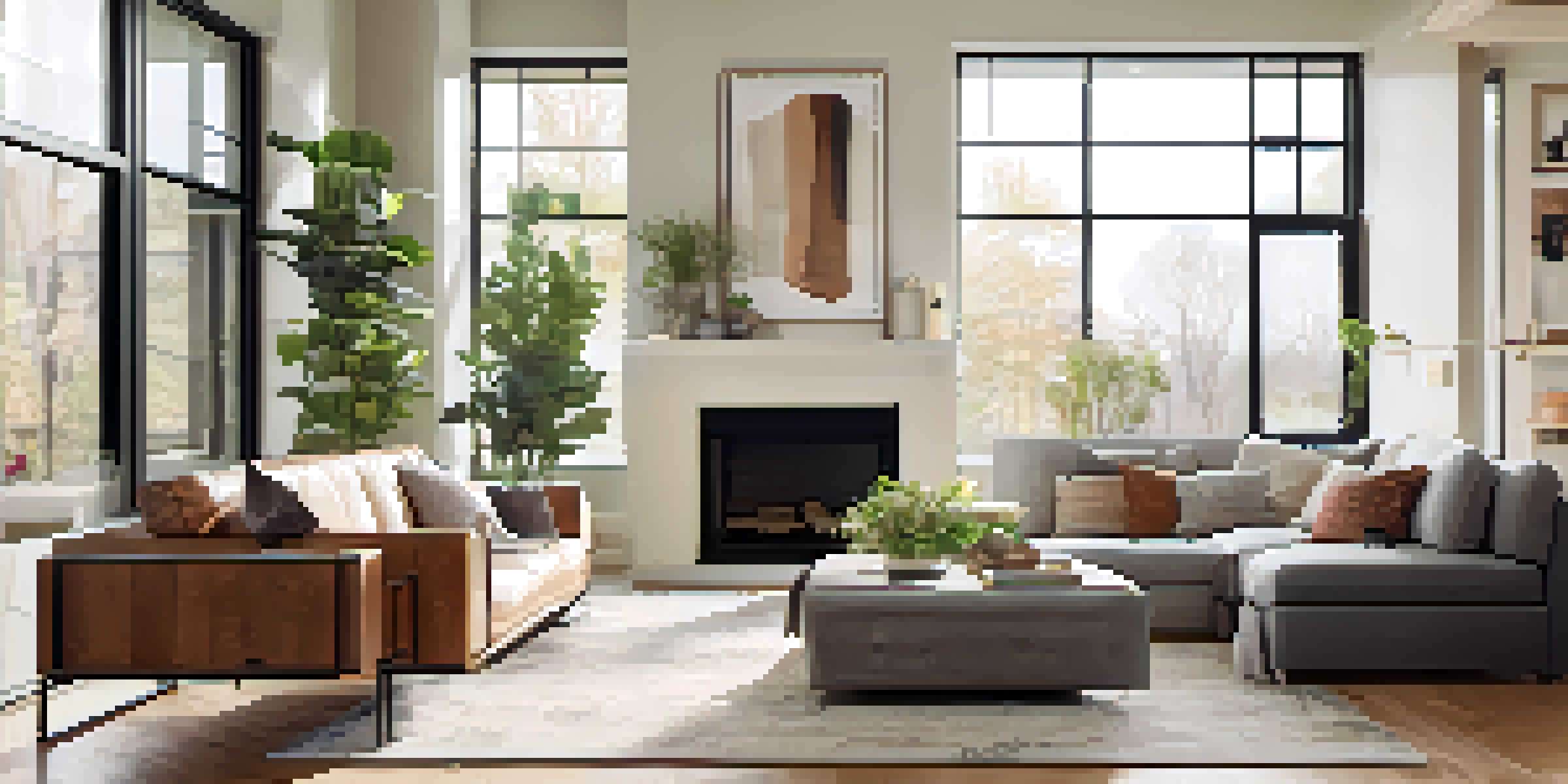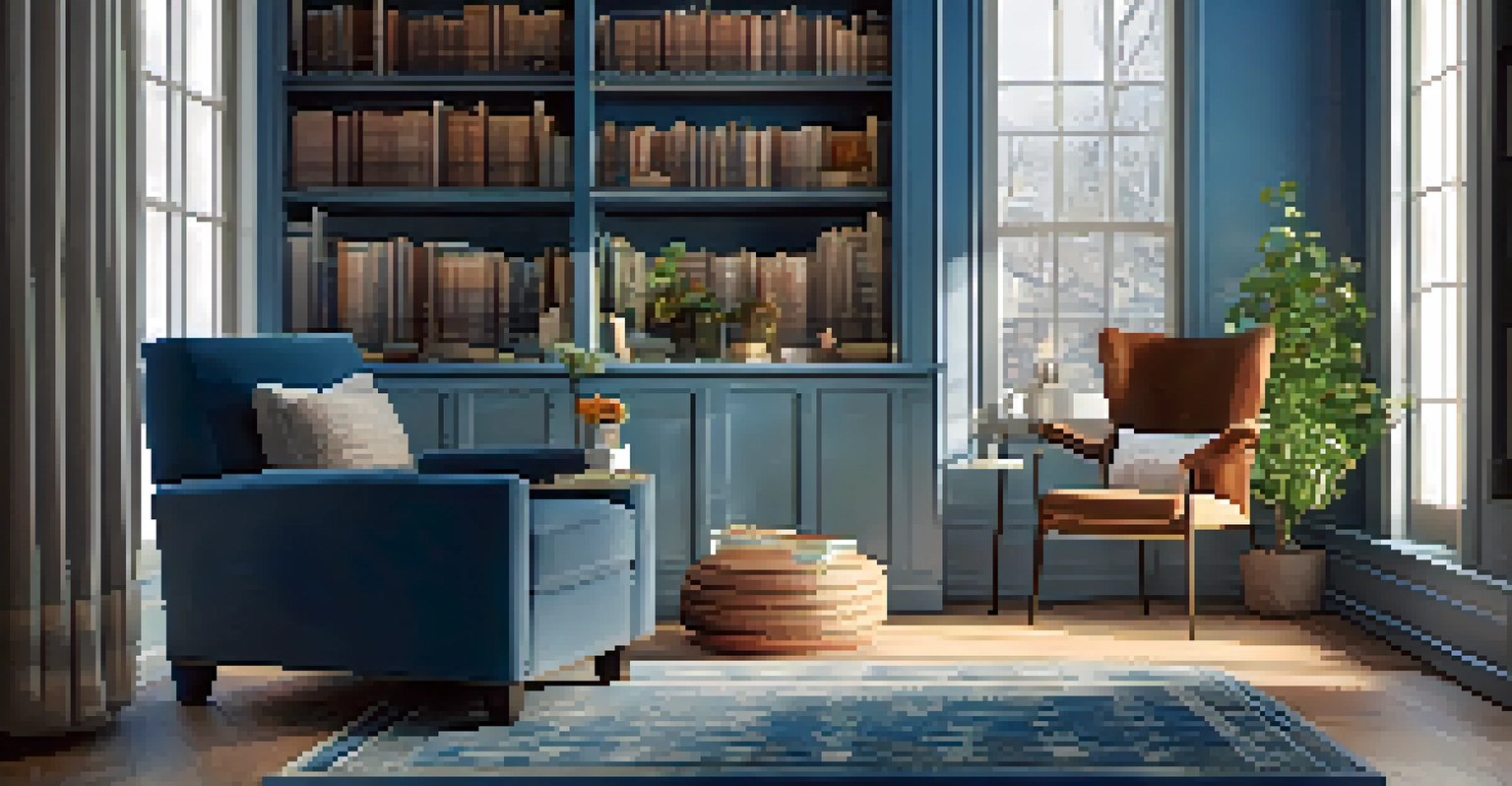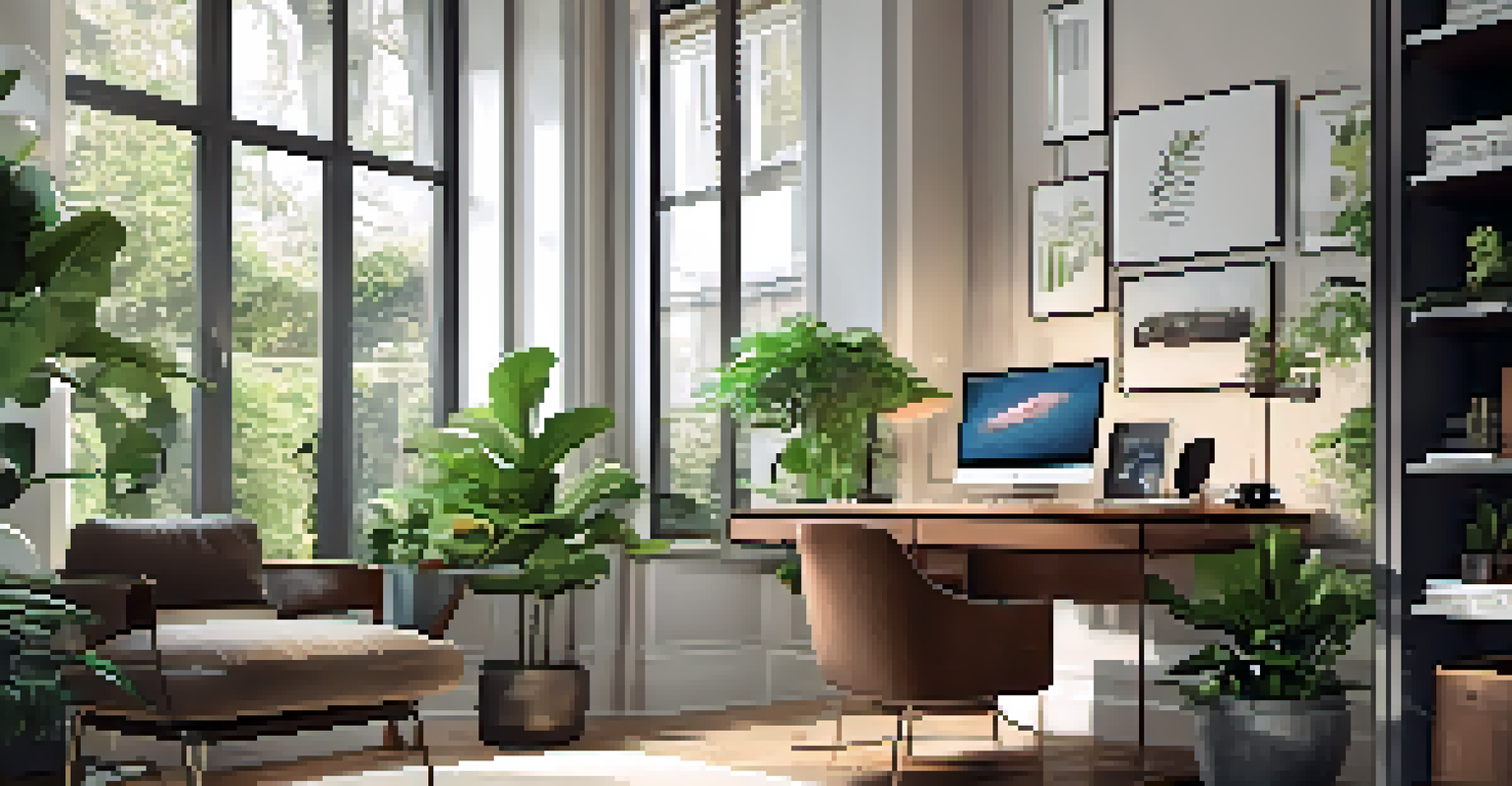Timeless Design Trends for Multifunctional Spaces

Embracing Open Floor Plans for Flexibility
Open floor plans have become a staple in modern design. By removing walls that separate living areas, you create a seamless flow between spaces, allowing for more versatility in how you use your home. This design encourages interaction, making it perfect for families and entertaining guests.
Design is not just what it looks like and feels like. Design is how it works.
The beauty of an open layout lies in its adaptability. For instance, a combined kitchen and living area can serve as a cozy family gathering spot during the day and transform into an elegant entertaining space at night. The ability to rearrange furniture easily further enhances this flexibility.
However, achieving balance is key in open spaces. Incorporating distinct zones through area rugs, lighting, or furniture arrangement can help define each area while maintaining an overall cohesive look. This approach not only maximizes functionality but also adds a layer of visual interest.
Incorporating Multi-Functional Furniture
In today's world, multi-functional furniture is a game changer for maximizing space. Think of a stylish sofa bed that provides both seating and sleeping arrangements for guests. This type of furniture is essential for smaller homes or apartments where every square foot counts.

Another example is a coffee table with built-in storage. It keeps your living area tidy while providing a spot to stash books, blankets, and other essentials. These clever designs not only save space but also add to the aesthetic appeal of your home.
Open Floor Plans Enhance Flexibility
Open floor plans create versatile living spaces that promote interaction and adaptability for various activities.
When selecting multi-functional pieces, consider your lifestyle. Choose items that not only serve a purpose but also reflect your personal style. This ensures that your space remains both practical and inviting, making it a true reflection of you.
Utilizing Natural Light for Enhanced Ambiance
Natural light can transform a room, making it feel more spacious and inviting. Large windows or glass doors can create a bright, airy atmosphere, which is especially beneficial in multifunctional spaces that serve various purposes throughout the day. The right amount of light can significantly influence mood and productivity.
The best rooms have something to say about the people who live in them.
Incorporating mirrors is another effective way to enhance natural light. They not only reflect light but also create an illusion of depth, making a room feel larger. Positioning mirrors opposite windows can maximize this effect, brightening even the darkest corners of your home.
To complement natural light, consider using lighter paint colors and sheer window treatments. These choices can help maintain a bright ambiance while allowing for privacy. Ultimately, a well-lit space fosters a sense of openness and comfort, which is ideal for multifunctional living.
Creating Zones with Color and Decor
One effective way to define different areas in a multifunctional space is through the strategic use of color and decor. By painting walls in varying hues or using different decorative elements, you can visually separate areas without the need for physical barriers. This approach keeps the space feeling open while providing a sense of organization.
For example, you might choose a calming blue for a reading nook while opting for a vibrant yellow in a play area, allowing each zone to have its own identity. Additionally, incorporating artwork or statement pieces can further enhance the character of each area, making it unique and inviting.
Multi-Functional Furniture Saves Space
Incorporating multi-functional furniture allows for efficient use of space while maintaining style and practicality.
It's essential to maintain a cohesive theme throughout your space. This can be achieved by choosing complementary colors and decor styles, ensuring that even as you define different zones, the overall design feels harmonious and intentional.
Incorporating Technology for Smart Living
Incorporating technology into your design can significantly enhance the functionality of your spaces. Smart home devices, such as automated lighting and temperature controls, allow you to create the perfect atmosphere for various activities, from working to relaxing. This level of control adds convenience to your daily life.
Another consideration is the integration of technology into furniture. For instance, desks with built-in charging stations or entertainment centers that accommodate various devices can streamline your living experience. These innovations allow you to enjoy modern conveniences without sacrificing style.
When incorporating technology, it's vital to choose user-friendly solutions that blend seamlessly into your decor. By doing so, you can enjoy the benefits of smart living while maintaining the aesthetic appeal of your space, ensuring that it remains a comfortable haven.
Sustainable Design for Long-Lasting Impact
Sustainable design is not just a trend; it's a necessity for creating lasting multifunctional spaces. By opting for eco-friendly materials and energy-efficient appliances, you not only reduce your carbon footprint but also create a healthier living environment. This approach aligns with a growing awareness of environmental responsibility.
For example, choosing reclaimed wood furniture or recycled materials can add character to your space while promoting sustainability. These choices often provide unique aesthetics that tell a story, enhancing the overall charm of your home.
Personal Touches Make Spaces Unique
Adding personal elements and meaningful decor transforms multifunctional areas into inviting and reflective homes.
Moreover, incorporating plants into your design can improve air quality and add a refreshing touch to any room. This element of nature not only serves a functional purpose but also enhances the visual appeal, creating a space that feels vibrant and alive.
Personalizing Spaces with Meaningful Touches
In any multifunctional space, adding personal touches is what truly makes it feel like home. Consider displaying cherished photographs, unique art pieces, or souvenirs from travels that resonate with you. These items infuse personality into your space, making it more inviting and reflective of your individual story.
Another way to personalize your environment is through the use of textiles. Cozy blankets, decorative pillows, and curated rugs can add warmth and comfort, inviting you to relax and linger. These elements also allow for easy updates as your style evolves over time.

Ultimately, your home should be a sanctuary that reflects who you are. By incorporating meaningful elements into your design, you create a multifunctional space that not only serves various purposes but also feels uniquely yours.